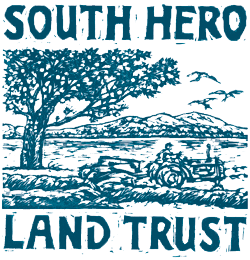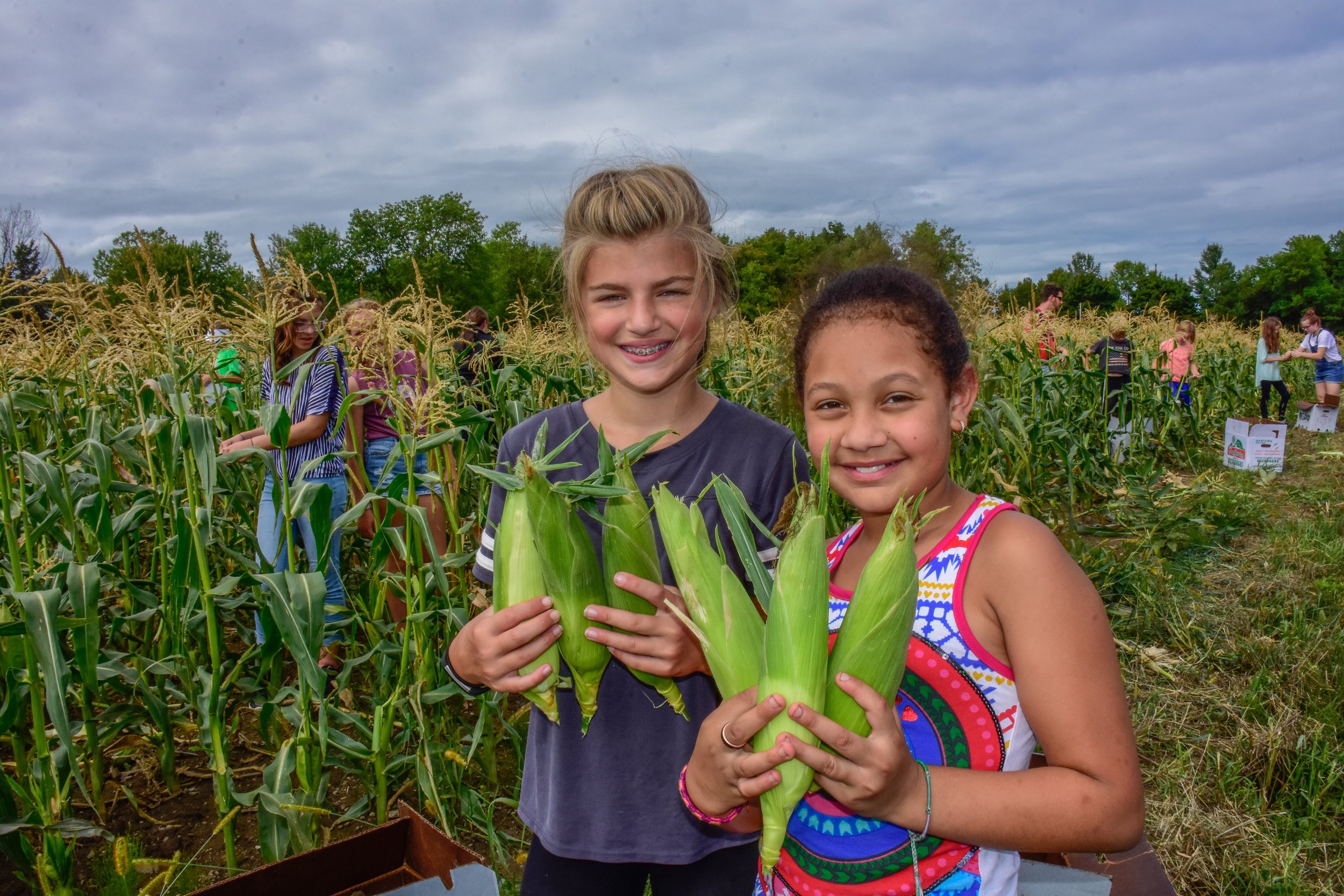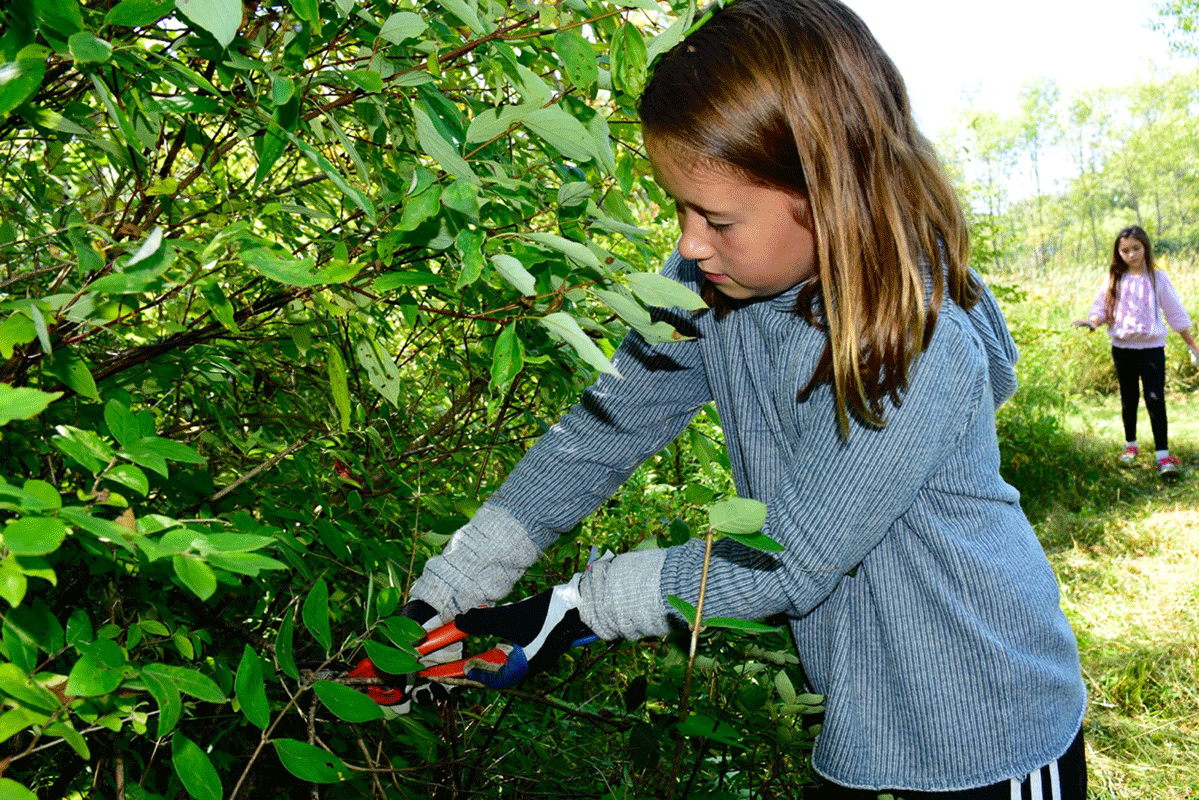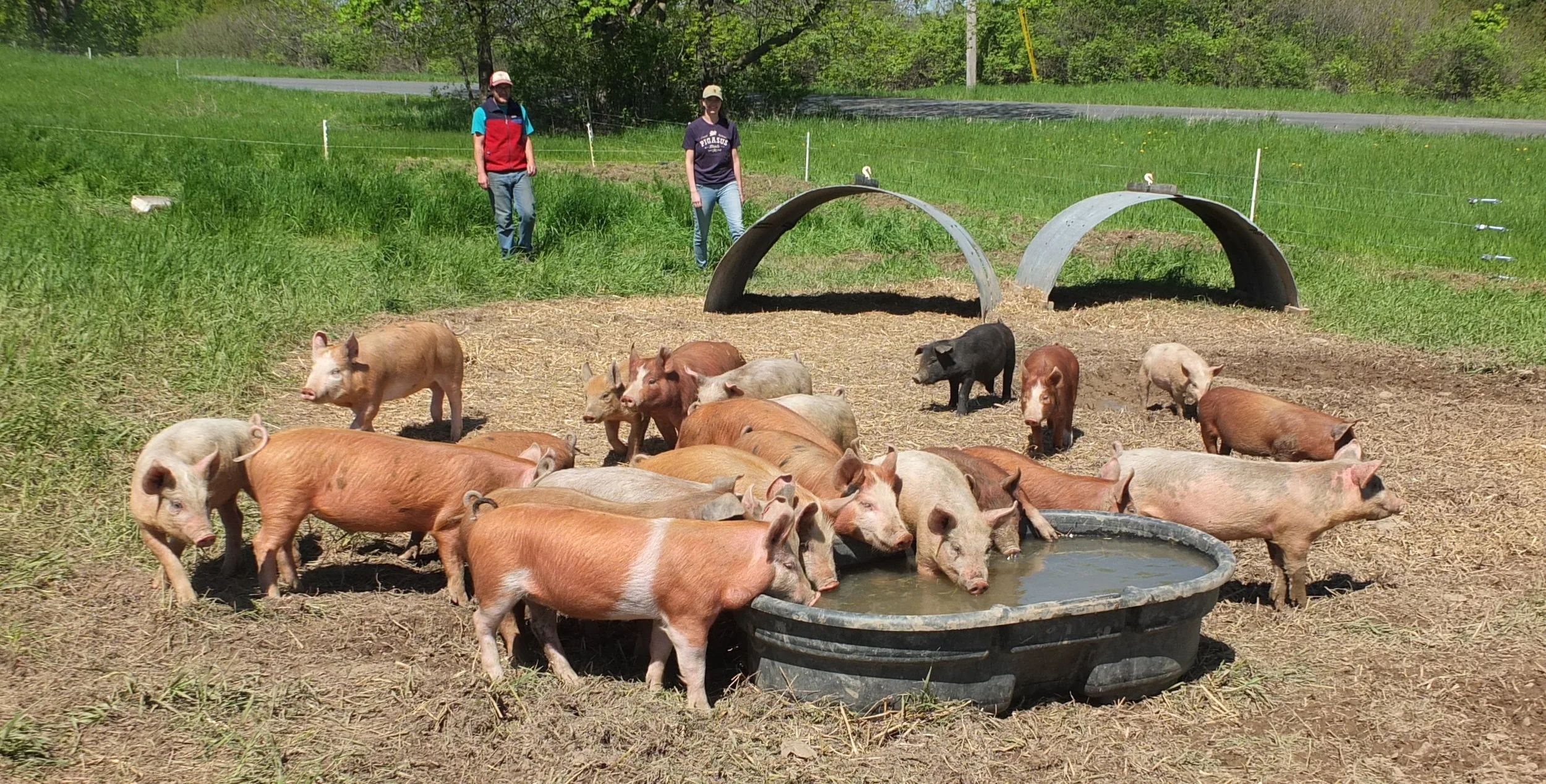A Different Kind of School Day
On September 7th a group of middle school students from South Hero did something a little different. It was a Wednesday afternoon, and instead of being in the classroom, studying the formation of the planet, or learning the basics of algebra, they got one a bus and rode to Pomykala Farm in Grand Isle. They were there to meet Koi Boynton and Hannah Baxter, two gleaners with the Healthy Roots Collaborative, to harvest corn on the farm.
Hannah had spoken to Ben Pomykala two days earlier. Ben said that they had finished harvesting the sweet corn for the year, but there was still plenty in the fields. It was a little small, but perfectly good eating. Would Hannah bring some volunteers to pick the corn and bring it to one of the food shelves in the region?
Hannah knew this would be a perfect job for these students. It would be a great way for them to learn more about where the food they eat comes from, and to get a better understanding of some of the challenges that families in our community face, like buying enough food to get through the month. The students stripped the field clean, packing the corn into boxes. The corn was then taken to Islands in the Sun and Saint Amadeus Church in Alburgh, and from there to our neighbors’ tables.
Harvesting for our Neighbors
Harvesting corn, photo by Rob Swanson
The Healthy Roots Collaborative (HRC) has been working with farmers in Grand Isle and Franklin Counties to harvest extra fruits and vegetables and distribute them to charitable food sites in our community for three years now. South Hero Land Trust has been a member of the Collaborative, and worked with Collaborative staff and volunteers on this program since it began- making connections with Grand Isle County farms, charitable food organizations like Food for Thought and CIDER, and local volunteers to help with the harvest. HRC worked with 10 farms this year, and distributed food to six sites in our county, serving primarily families with young children and seniors- the two most vulnerable populations in our region.
As Kaight Althoff, co-founder of the Food for Thought Program says, this work is an important part of being good neighbors. “We are treating people with kindness and compassion and helping them meet a basic need of caring for their children when school isn’t in session. So many kids receive free lunch during the school year, and when school is out, Food for Thought is there to fill in the gap and help families.” For many families, fresh fruits and vegetables are the first thing they stop buying when their budget gets tight, and the gleaning program and Food for Thought are working to overcome this. Kaight remembers a donation from Island Blueberries that went to families last summer, and one of the mothers was so excited. She said “I always walk by the blueberries in the store because they are so expensive, but today we will have blueberries!”
Farmers are the Real Heroes
Hannah Baxter, Gleaning Coordinator for HRC, says that most farms have “unofficially woven giving back to the community into their business plans,” and many have giving to the Vermont Food Bank or local food shelves for many years. HRC is there to make that easier, by harvesting the produce with volunteers, and delivering it right to the recipient sites.
Pomykala Farm has been a critical partner in Grand Isle. They were hesitant to have HRC come to the farm at first, they were already donating to the Food Bank. “But when they saw the volume of vegetables that HRC could take, and the effort we made to distribute it, all while making it easy for them…” says Hannah. “they became our most regular partners. Hannah wants to be clear- HRC is providing a great service to farmers and charitable food sites, but the farmers are the ones donating the produce- it is their generosity that is feeding our neighbors.
Melons and sunflowers growing at Pomykala Farm
One of Hannah’s favorite parts of the program is getting kids out on the farm to glean. She helps organize field trips for local schools and camps. She says it is a great learning opportunity, as well as a chance for kids to make a difference in their own communities. There is no better way for kids to learn about hunger, and where their food comes from, than gleaning on the farm. And if they can do something about hunger in their own community at the same time, the message is that much more powerful. Hannah says that the kids ask a lot of questions and that you can “really see them thinking” about what it means to help each other. South Hero Land Trust is proud to be part of this important work in Grand Isle County!
Want to Know More?
If you’d like to learn more about the Healthy Roots Collaborative Gleaning Program visit http://healthyrootsvt.org/what-we-do/ or contact Hannah Baxter, Gleaning Coordinator, at healthyrootsgleans@gmail.com.































